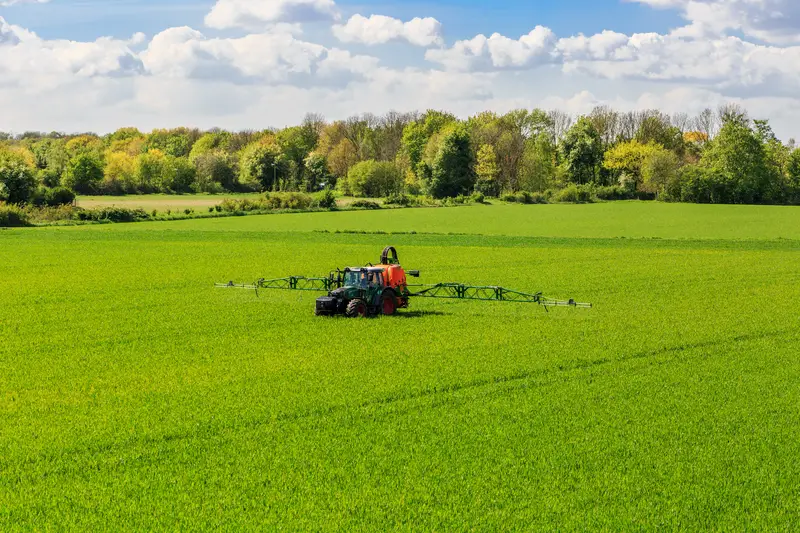Introduction
Glyphosate is the most commonly used herbicide and Roundup is the most popular glyphosate-based brand. They help the gardeners to get rid of weeds in their yard and flower bed, a big thanks to them!
But, as you are on this page, you may be in utter confusion about how rainfast glyphosate is. Maybe you are new to this or you used the herbicide and after some time, it started raining. Now you are tensed if the rain will dilute the glyphosate.
Okay, if the situation is something like this, and your question is ‘how long does glyphosate need to be on before rain?’ then, don’t worry. We are going to answer your question and break them down.
So, let’s dive in!

As an Amazon Associate I earn from qualifying purchases.
How Glyphosate Works
This part is for having a basic idea about how roundup works. Glyphosate is a non-selective systemic herbicide that can kill any type of vegetation by soaking in through the foliage.
But, glyphosate has to penetrate the leaf surface to provide effective weed control. For this, while absorption occurs relatively quickly, rain after the application may wash glyphosate off before it has a chance to enter the leaf.
The plant’s vascular system will carry the herbicide to all areas of the plants (including the roots) and kill it quickly (within around 24 hours). Besides, glyphosate will not soak into the roots to the soil, it has to contact the leaves to be effective.
The fact is roundup works best when sprayed on dry foliage. What if it lands on the wet foliage? Well, it will combine with the water droplets and follow them as they run off the leaves. Realistically, in this case, much of the herbicides will end up landing on the soil (where it’s ineffective) rather than sticking to the leaves and soaking in.
How The Diluted Situation Is?
The most common situation for homeowners is a ready-to-use roundup solution, the diluted mixture is only 2% glyphosate. Yes, this amount is enough to kill weeds and unwanted plants but when you dilute it further, it may lose potency.
Moreover, spraying roundup on wet leaves will mix glyphosate and water which will reduce the strength of the herbicide that soaks into the foliage.
About Rainy Day Application
So, here is the core of our discussion.
In case, you are in a time crunch and you think that rain is about to happen, then wait for a clear, windless day. Glyphosate will need only 30 minutes to soak into the leaves before the rain hits.
After 30 minutes, if it starts raining, the herbicide will not wash away in the rain. But, after rainfall, it might take hours for the foliage to dry completely, mainly, if the weather remains humid. Moreover, windy conditions can cause spray to drift toward other plants that you won’t want to harm.
So, if there’s a lot of dew on the ground in the morning where you live, it would be better if you hold off on spraying until most of the moisture has dried. In fact, it may be needed to reapply glyphosate to the area you’ve previously treated (if it rains within 6 hours afterward).
Temperature And Glyphosate Performance
Glyphosate generally performs well under a wide range of temperatures. But, the best performance you will get when the temperature is 60-75 degrees Fahrenheit at application as well as remains there for a few hours afterward.
When the temperature is under 60 degrees Fahrenheit, weed growth slows and results in slower herbicide uptake and translocation. In this case, the required rainfast period increases and the onset of symptoms and herbicide efficacy decreases.
When the temperature is under 40 degrees Fahrenheit, avoid applying any glyphosate-based herbicides. In case, any severe frost is predicted immediately following an intended application, it would be better to avoid spraying. Worth noting, if weeds are damaged or under stress, before herbicide is properly translocated, control can be reduced.
So, waiting for better weather conditions will be the ideal solution. Besides, if weed size or other situation dictates that the field be treated now, try to select a herbicide with excellent efficiency on the target species.
What Is the Best Time to Apply Glyphosate and Why?
Glyphosate needs to be applied when the plant is actively growing and transpiring moisture, which requires sunlight. This means you need to apply glyphosate in the morning so that it will take effect during the day.
Glyphosate is deactivated very easily so applying at night, even if it doesn’t rain, is likely to be ineffective. So, apply in the morning on a day that is expected to be sunny and warm with no rain.
Safety Precautions
- Don’t ever dispose of excess herbicide or clean out your sprayer, watering can, or product container anywhere that your pets or children might venture.
- Some studies claim that glyphosate causes serious health risks, including Parkinson’s disease, birth defects, and bowel-related illness. So, must wear gloves, a mask, and goggles while working with glyphosate.
FAQs
Question: May I use roundup to control the spread of liches, moss, or scrub grass?
Answer: Yes, you may use it for this purpose.
Question: How long weed killers last on the soil?
Answer: Most weed killers evaporate within 24 to 78 hours.
Question: What percent of glyphosate is recommended?
Answer: 50.2% is ideal for killing weeds.
Question: Should I cut weeds before spraying?
Answer: No, there is no need to cut them before spraying.
Question: Can glyphosate kill any beneficial insects?
Answer: Yes, it may kill beneficial insects including parasitoid wasps, ladybugs, and lacewings.
Conclusion
Are you still there? If you are, then thanks for keeping faith in us. We tried to decorate the concise information in a very detailed manner.
So, we hope that, by reading this article, the answer to ‘how long does glyphosate need to be on before rain?’ is crystal clear to you now. Never forget to practice ‘safety first’ while working chemicals like glyphosate.
Good luck!
